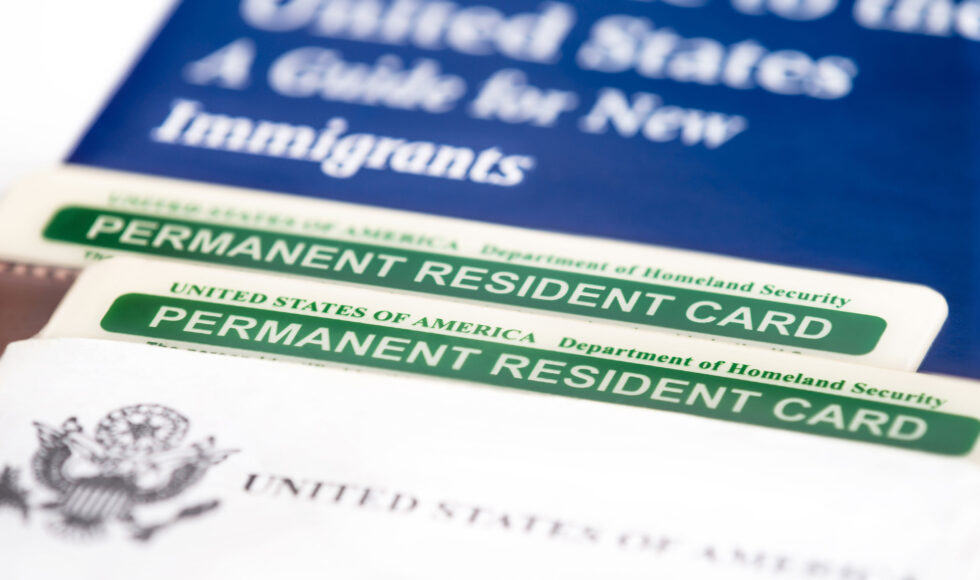Family of U.S. Citizens
“Immediate Relatives” refers to the parents, spouses and children (who are unmarried and under 21 years of age) of a U.S. citizen. Immediate relatives of a U.S. citizen can immigrate to the United States without being subject to any numerical restrictions, unlike other close family members of U.S. citizens and/or permanent residents. Namely, they can apply for the permanent resident status without having to deal with any waiting time. Other close family members of U.S. citizens or permanent residents are divided into several groups called “Preferences”. Each Preference is given a numerical quota per year to limit the number of immigrants admitted into the United States.
This page describes how you (a U.S. citizen) may petition for certain family members to receive either a Green Card, a fiancé(e) visa or a K-3/K-4 visa based on your relationship.

Table: Relatives for Whom You May Petition
| Type of Relative for Whom You May Petition | Immigration Benefit | Guidance | Related Forms |
|
Green Card (permanent residence) | How Do I Help My Relative Become a Permanent Resident? (Guide for U.S. Citizens) | |
|
Fiancé(e) visa | How Do I Help My Fiance(é) Become a Permanent Resident? | |
|
K-3/K-4 visa | K-3/K-4 visas |
Application Process: Green Card (Permanent Residence)
To petition for a family member to receive a Green Card (permanent residence), begin by filing Form I-130, Petition for Alien Relative. This form establishes the family relationship that exists between you and your relative. Sometimes the I-130 can be filed together with an application for permanent residence, officially known as Form I-485, Application to Register Permanent Residence or Adjust Status. This is discussed below.
Which Relatives May I Petition For?
| Immediate Relatives | Other Family Members |
Visas are always available for immediate relatives of U.S. citizens. This means your family member does not need to wait in line for a visa. Immediate relatives who are in the United States can file Form I-485, Application to Register Permanent Residence or Adjust Status at the same time as Form I-130. For more information on how your relative can apply to adjust status (get a Green Card) while they are in the United States, see the How Do I Help My Relative Become a Permanent Resident? guide. |
Preference categories apply to family members who are not immediate relatives. The visas allotted for these categories are subject to annual numerical limits. A visa becomes available to a preference category based on the priority date (the date the Form I-130 was filed). Preference categories are grouped as follows:
For current wait times, see the USCIS Processing Time Information page on this website and the Visa Bulletin page on the U.S. Department of State website. For more information on priority dates, see the Visa Availability and Priority Dates page. |
What Happens Next?
- If your relative is already in the United States, they may apply to adjust status to become a Green Card holder (lawful permanent resident) after a visa number becomes available using Form I-485.
- If your relative is outside the United States, your petition will be sent to the National Visa Center (NVC). The NVC will forward your petition to the appropriate U.S. consulate when a visa becomes available and your relative will be notified about how to proceed. This process is referred to as “consular processing.”
- Your family member’s preference category will determine how long they will have to wait for an immigrant visa number. Once you have filed a petition, you can check its progress the My Case Status page. For visa availability information, see the Visa Bulletin page on the U.S. Department of State website.
For more information on becoming a Green Card holder, see the Adjustment of Status for processing within the United States and Consular Processing page for processing overseas. For more information on Green Cards, see the Green Card section.
NOTE: A visa petition (Form I-130 or Form I-129F) is only used to demonstrate a qualifying relationship. An approved petition DOES NOT grant any benefit, it simply creates a place in line for visa processing.


